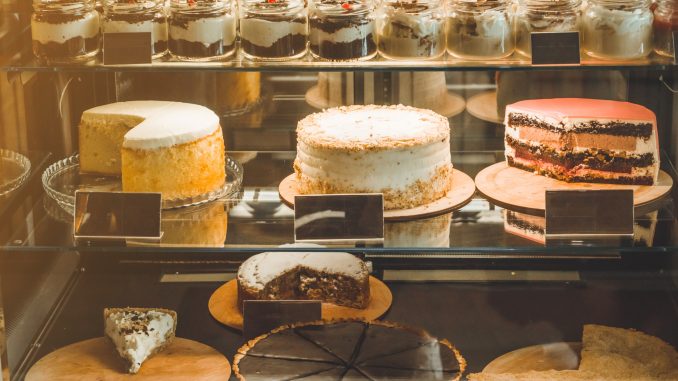
Staling in cakes can occur due to a variety of factors, including exposure to air, changes in temperature, and loss of moisture. The main points to prevent staling in your cakes are:
- Store your cake properly: After the cake has cooled, wrap it tightly with plastic wrap or aluminum foil to prevent air from getting in. You can also store the cake in an airtight container. Keep the cake at room temperature or in the fridge, depending on the type of cake.
- Use the right ingredients: Use high-quality ingredients, especially flour and sugar, as they can affect the moisture content of the cake. Avoid overmixing the batter as it can cause the cake to be dry and crumbly.
- Add moisture: Add ingredients like sour cream, yogurt, or buttermilk to the batter to keep the cake moist. You can also add a simple syrup made of equal parts sugar and water to the cake after baking to add moisture.
- Freeze your cake: Freezing your cake can help to prevent staling. Wrap it tightly with plastic wrap or aluminum foil, then place it in a freezer bag. Thaw it at room temperature before serving.
Some Product Developers Prefer Butter to Shortening In Reducing Staling But Why?
Butter can help to reduce staling in cakes, but it is not the only solution. Butter is a type of fat that contains water, which can help to add moisture to the cake and slow down staling. It also has a rich flavor that can enhance the taste of the cake.
However, butter can be more expensive than shortening and can also have a lower melting point, which can affect the texture of the cake. However, using too much butter or overbaking the cake can actually make the cake more prone to staling.
Shortening, on the other hand, is a type of fat that is made from hydrogenated vegetable oil. It does not contain water, which can make it easier to work with and can also help to make the cake more tender. However, shortening has a less pronounced flavor than butter and can also contribute to a less desirable mouthfeel in the cake.
Butter is characterized by the presence of smaller β’ crystals and lower melting polymorphs compared to crystals found in vegetable shortenings for example (Podmore, 1994). It is small crystals that are effective and efficient in the incorporation of air into cake batter (Brooker, 1993).
Other fats that can help to reduce staling in cakes include vegetable oil, sour cream, yogurt, and buttermilk. These ingredients can also add moisture and richness to the cake.
In addition to using the right fats, there are other techniques that can help to reduce staling in cakes. For example, you can add simple syrup to the cake after baking to add moisture, or you can store the cake properly in an airtight container or wrapped tightly in plastic wrap or aluminum foil to prevent air from getting in.
Ultimately, whether butter or shortening is better for reducing staling in cakes depends on the specific recipe and the desired outcome. Some recipes may work better with butter, while others may work better with shortening. It may also be possible to use a combination of both fats to achieve the desired texture and flavor.
Glucose or Sucrose in Cake Staling: Which is Better?
Glucose is better than sucrose in reducing staling in cakes. Glucose is a type of simple sugar that is commonly used in baking and has a higher hygroscopicity, which means it can attract and hold onto moisture more easily. This helps keep the cake moist and prevent staling.
Sucrose, on the other hand, is a disaccharide made up of glucose and fructose molecules. It is not as effective at retaining moisture as glucose because it has a lower hygroscopicity.
In addition to glucose, other ingredients that can help to reduce staling in cakes include invert sugar, which is a mixture of glucose and fructose that is more hygroscopic than sucrose, and corn syrup, which is a liquid sweetener that is high in glucose.
It is important to note that using too much glucose or other liquid sweeteners in a cake recipe can affect the texture and taste of the cake.
References
Brooker, B.E. 1993. The stabilization of air in cake batters – The role of fat. Food Struct. 12: pp. 285-296.
Podmore, J. 1994. Fats in bakery and kitchen products. In Fats in Food Products. D.P.J. Moran and K.K. Rajah, (Ed.), p. 213-253. Blackie Academic & Professional, London
Leave a Reply